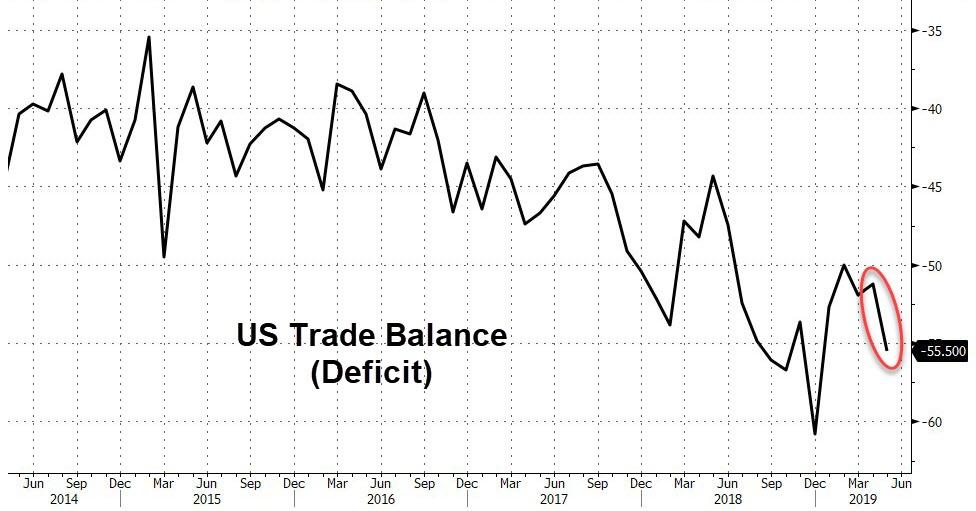US Trade Deficit Re-Accelerates In May
After a few months of 'pause' the US trade deficit has re-accelerated in May (the deficit rose from -$51.2bn to -$55.5bn), considerably more than expected.
-
Imports rose 3.3% in May (the most since March 2015) to $266.16b from $257.64b in April
-
Exports rose 2% in May (the most in a year) to $210.64b from $206.41b in April
This is the highest trade deficit of 2019...
Ex-Petroleum, the deficit did not accelerate as much...
Notably the May deficit with Mexico widened to $9.6b, the highest on record, and Chinese imports and exports both surged, potentially reflecting companies rushing shipments ahead of Trump's latest increase in levies announced in May.
The real petroleum gap increased to an eight-month high of $10.7 billion as imports jumped, largely reflecting Canadian crude oil; excluding petroleum, the goods trade shortfall also widened.
Additionally, May imports of automotive vehicles, parts, and engines rose $2.3b to $33.2b, also the highest on record.
Finally, we noted that the worldwide grounding of Boeing Co.'s 737 Max model continued to weigh on the U.S. economy. While civilian aircraft exports rose to $3.1 billion in May, it's still the second-lowest monthly total since 2012, according to data compiled by Bloomberg.


Commenti
Posta un commento